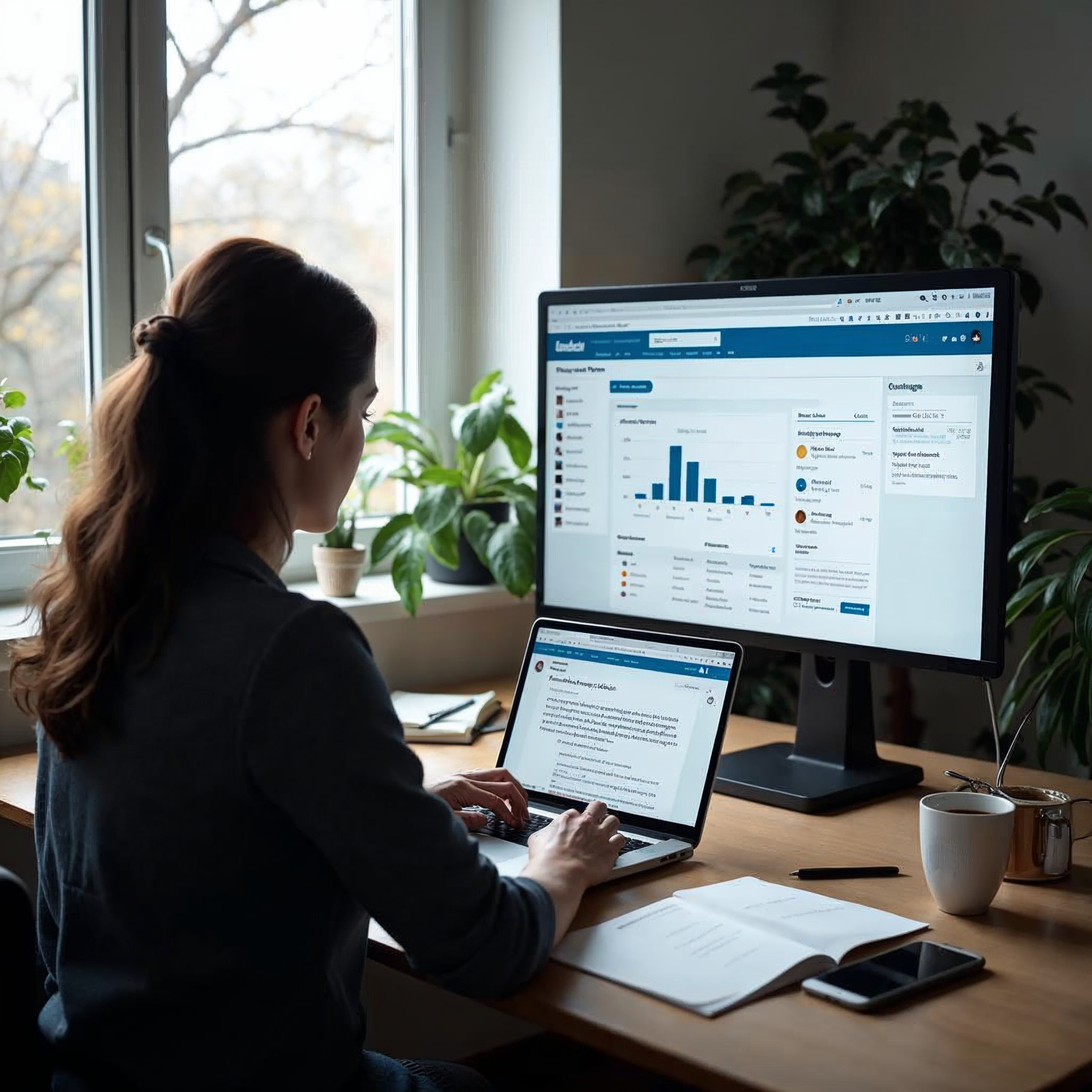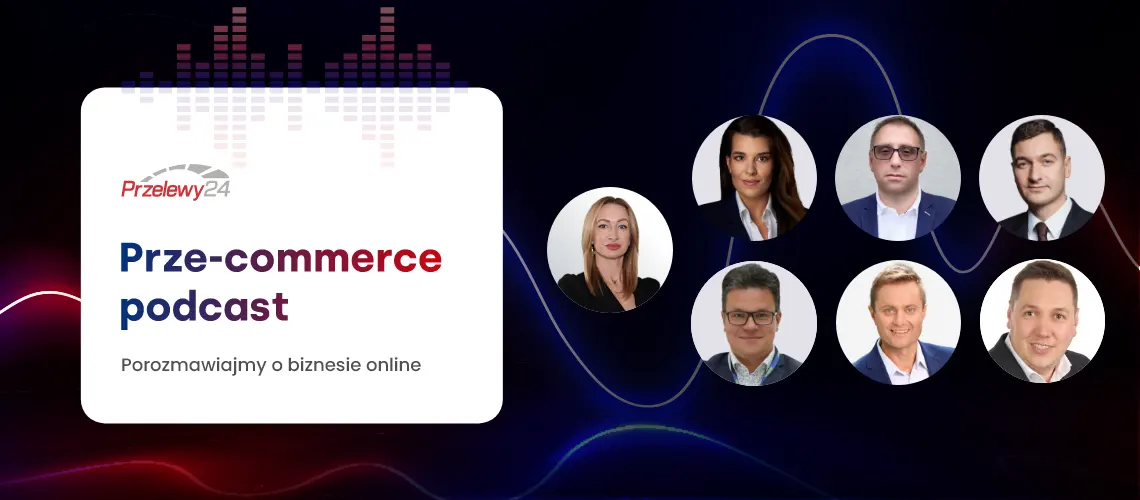How to create effective content on LinkedIn? A 2025 Guide
Published: June 12, 2025 | Last updated: June 12, 2025
Effective content on LinkedIn isn't just the art of writing; it's a strategy based on data, emotion, and authenticity. If you want to make your profile stand out, build a strong brand, and acquire clients, you've come to the right place.
In 2025, LinkedIn is one of the most powerful content marketing platforms in the B2B sector. It's where purchasing decisions are made, business relationships are built, and brand recognition is hugely influenced. But not all content is equally effective. Some posts build reach and establish an expert position, while others disappear without a trace.
In this guide, we'll show you how to apply the best creators' practices to create engaging, professional, and converting content. You'll learn how to write posts that grab attention, generate clicks, and lead to conversions—without losing your brand's authentic voice.
If you run an online store, are growing a personal brand, or offer services, this guide will help you:
- build trust in your brand through authentic content,
- publish posts that engage, sell, and educate,
- optimize your profile and activity schedule to increase your visibility.
Table of Contents
- Why is LinkedIn a key channel for SMEs?
- Optimizing your LinkedIn profile—the foundation of effectiveness
- Content strategies—evergreen, trends, and what's in between
- Style, tone, and format—the secrets of authenticity
- The anatomy of an effective post—how to write posts that work
- Schedules and publication rhythm—how often and when to publish
- Personal branding and marketing on LinkedIn
- What kind of content sells and builds recognition?
- Common mistakes—what to avoid to not lose reach?
- Experiment with content—5 ideas for testing content
- LinkedIn—frequently asked questions (FAQ)
- LinkedIn content in a nutshell: checklists and templates
• The strongest LinkedIn posts in 2025 are based on storytelling and emotions.
• Personal content (work-life balance, values, mistakes) generates more interaction than substantive analyses.
• Regularity (2–5 posts a week) and publishing on Mondays and Sundays yield the highest reach.
• The most effective profiles include a value-oriented headline, a professional photo, and an "About Me" section written in the first person with a CTA.
Why is LinkedIn a key channel for SMEs?
LinkedIn is not just a recruitment tool or a B2B platform for big players. In 2025, it's an active channel for content marketing, remarketing, networking, and sales for companies in the SME sector. According to a Hootsuite report, as many as 78% of B2B professionals actively follow publications on LinkedIn before making a purchasing decision.
What's more:
- LinkedIn has a higher B2B conversion rate than Facebook and Twitter combined.
- Organic posts have the potential to achieve significant reach—with the right format, content, and time of publication.
- It's a space for building the personal brand of business owners—which directly translates to brand trust and purchasing decisions.
Optimizing your LinkedIn profile—the foundation of effectiveness
Before your content starts to grab attention, visitors to your profile will judge: who you are, how you present yourself, and whether you're worth listening to. This is the zero moment of trust. That's why your LinkedIn profile should be optimized for both UX and the platform's internal SEO.
10 elements of an effective profile:
- Value-oriented headline: e.g., "E-commerce Strategist | Helping SMEs triple their conversion rates through UX"
- Profile photo: professional but natural. Facial expression matters—people click on smiling faces.
- Background banner: treat it like a free billboard—promote your slogan, USP, or benefits here.
- "About Me" section: write in the first person, focus on storytelling. Include specifics and a call to action (CTA).
- Work experience: don't just copy your CV—highlight your work's results and the language of benefits.
- Skills and endorsements: a minimum of 10 key skills with endorsements.
- Recommendations: gather (and give) specific, useful recommendations.
- "Featured" section: highlight your top posts, articles, or podcasts.
- Activity: maintain a constant presence—comment, write, react.
- Keywords: tailor them to your industry—add them in your headline, "About Me," and descriptions.
Convenient payment processing? Check out Przelewy24's payment solutions
Content strategies—evergreen, trends, and what's in between
Good posts combine personal experience with topics that resonate with the audience. In 2025, the highest engagement is built by three groups of content:
- Evergreen: personal development, education, management.
- Trends: AI, automation, social events.
- Personal content: work-life balance, emotions, values.
Practical tactic: mix content types. For example, 2x evergreen, 1x personal, 1x trend per week. This helps build expert visibility and a human connection with your audience.
Style, tone, and format—the secrets of authenticity
An analysis of the style of the TOP50 most effective creators on LinkedIn shows that the best-performing posts are:
- written in the 1st person ("I")—they increase trust and show a person, not a "company,"
- using simple, everyday language—accessible even to laypeople,
- using emotions (joy, frustration, humility)—they intensify engagement,
- with a clear CTA—best in the 2nd person: "What about you? Do you feel the same?"
This "human" style is what distinguishes effective posts from corporate leaflets and makes your audience react, comment, and remember.
The anatomy of an effective post—how to write posts that work
While there is no single universal recipe, an analysis of 50,000 posts shows that effective content contains specific elements:
- Hook: the first sentence that stops the scroll. It can be a question, a thesis, an emotion, or a surprise.
- Rehook: the second sentence—it expands on the hook's topic and holds attention (e.g., a promise, context).
- The main content: preferably ~700–900 characters. Bulleted lists, stories, specifics.
- Call to action (CTA): e.g., "Share your experience in the comments."
- Formatting: paragraphs, bolding, emojis (in moderation), and structural highlights.
Checklists, case studies, failures, and lessons—these are the four most common and effective post formats.
Schedules and publication rhythm—how often and when to publish?
You don't have to publish every day, but regularity (2–4 times a week) significantly impacts the results. Engagement analysis also showed clear patterns:
- Mondays and Sundays—highest engagement.
- Tuesday–Thursday—more publications, but lower average reach.
- Weekends—underutilized, but very effective.
Minimum strategy: publish 2x a week (Monday + weekend).
Optimal strategy: 3–4 diverse posts a week + commenting on others' posts.
Personal branding and marketing on LinkedIn
Branding on LinkedIn is not just about having your company's name in the background. It's the whole picture of how you are perceived by the community: from content and profile appearance to language and interactions.
5 rules for effective personal brand building:
- Write as "I"—not a ghostwriter. Express personal opinions and emotions.
- Focus on values: what is important to you? What topics do you want to promote?
- Posts = a test of brand character. Each post is an opportunity to show "who you are."
- Stay on topic. You don't have to write about everything. A chosen niche = a stronger brand.
- Professionalism = emotions + substance.
What kind of content sells and builds recognition?
From an analysis of creators' content in 2025, it's clear: the highest engagement is gained by posts about:
- private and professional life (work-life balance, mental health);
- personal experiences—failures, breakthroughs, reflections;
- values and ethics—honesty, teamwork, responsibility;
- AI, new technologies—with an opinion, not just news;
- education and tool tips—checklists, tips, processes;
- sales and marketing—with specifics and numbers.
The best posts are those that combine a professional topic with a personal story. This is a stimulus for emotion + an amplifier for substance.
Common mistakes—what to avoid to not lose reach?
1. Lack of a hook—openings that say nothing get lost immediately.
2. A wall of text—lack of paragraphs or bullet points is discouraging.
3. A style that is too formal or impersonal—people don't react to "press releases."
4. Content without value—focused only on the author, without reflection for the reader.
5. Lack of a CTA—posts without a punchline or an encouragement to interact fall flat.
Experiment with content—5 ideas for testing content
- X vs Y: e.g., a good vs. a bad leader—contrast posts increase comments.
- Failure + lesson: a sincere post about a mistake and the lessons learned = high engagement.
- Storytelling on Sunday: a quiet day = more audience attention.
- Checklists and "ready-to-use" formats: a higher number of shares.
- CTA in the 2nd person: "What about you? What would you do differently?"—this works.
LinkedIn—frequently asked questions (FAQ)
1. How many times a week should I publish on LinkedIn?
Optimally 2–4 times. One post with personal content, one substantive, and one educational. But quality always trumps quantity!
2. Is it worth using emojis in posts?
Yes—it helps with text structure and attracting attention, provided they are used in moderation (2–4 emojis per post).
3. Isn't content about private life too informal?
No—if it's authentic and related to your professional values or experiences. It engages much more than "hard" substance.
4. Is LinkedIn still worth using in e-commerce?
Yes—especially for B2B companies, stores offering business products, and advisors/experts in the retail and e-commerce industry.
LinkedIn content in a nutshell: checklists and templates
The ideal LinkedIn post—a framework to use
🎯 Hook—grab attention (question, number, controversy) 👀 Rehook—elaboration and a promise of value 🧩 Elaboration—a personal story or specific data 💬 Conclusion—a summary + CTA (e.g., "What do you think?") 📎 Formatting—paragraphs, checklists, max 2–3 emojis.
Example: "9 out of 10 stores lose customers due to a checkout that's too long. Do you know how to change that? Here are 3 things that will shorten the purchasing process without coding..."
Don't just test content in theory—take action! Results will appear after a few weeks. Authenticity, consistency, and engagement in the comments—that's the path to visibility and growth.
Convenient payment methods for your customers are an opportunity to grow your business.



